Almost 100 years ago, Dr. Edward H. Risley, a Boston doctor and registered Maine guide, left the city for a January journey to his “Leetle Cabain,” a oneroom camp in Maine’s Moosehead Lake region. The trip entailed an overnight train trip to Greenville, a two-hour wagon or sleigh ride to Walden’s farm (site of today’s Greenville Airport), a hike through the farm pasture, orchard, and woodlot down to the shore of Lower Wilson Pond, then a paddle or snowshoe trek across Lower Wilson and up Wilson Stream into the Upper Pond.
On January 13, 1912, Risley and friend Tracy Smith woke in a cold camp –the fire burned to coals, a half-inch of frost on the windows. The day’s adventures that followed are detailed in his camp log, from which the following passage is excerpted.
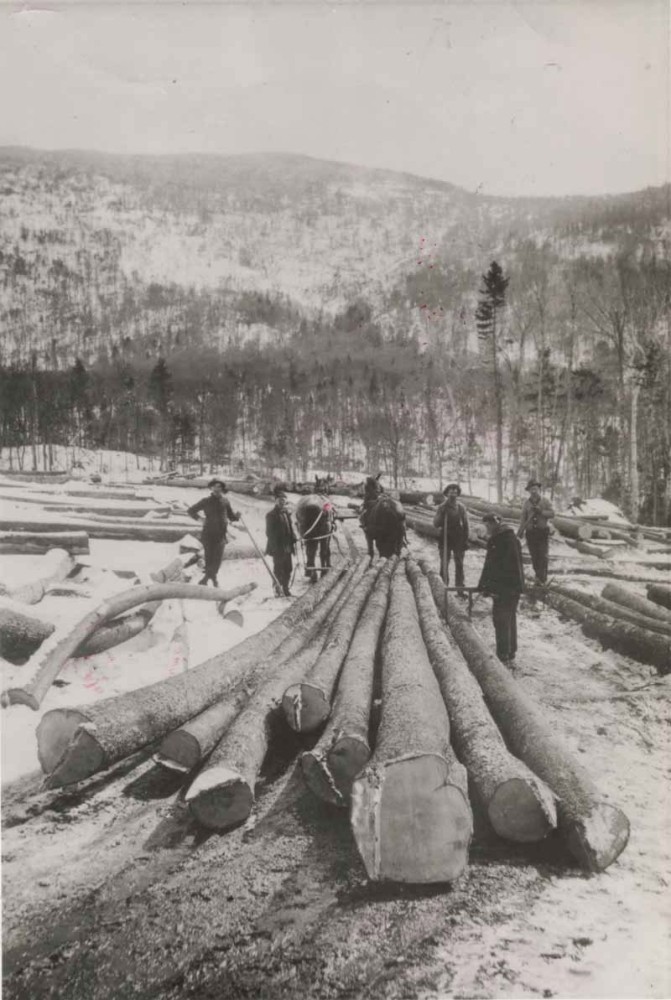
January 13, 1912 The storm we rather expected today did not arrive but instead a perfectly clear day with cruel northwest wind. Temp 3ºF below inside, 18ºF below outside when we arose. The clear yellowish sunlight was just lighting up that beautiful white ridge back of Baker as we got up. We cannot look out of any of the windows – they are crusted a half inch thick with frost. We peek at the thermometer and mountains through one small crack where the frost is absent. McEachern’s bushed tote road1 front on the lake makes you look up many times a day to see whether it is a bush or a man you spy out on the lake in front of you or coming around Cooper’s Point.
We had a fine breakfast of Ralston’s slolly, coffee, and bacon and egg and after replenishing the wood box and putting on extra underwear and thawing out Tracy’s toes, which seem to have got nipped a few days ago, we started out down through South Cove to hit the lumber tote road to Moody’s camp on Blue Ridge. We struck it – the tote road – just beyond the little clearing where you strike the trail to Sunday Pond. Before reaching the road we found great numbers of deer tracks around the cuttings – one huge one. A mile up the road, which follows close under the ridge, we came onto the first yarded lumber. The great mass of logs was buried under the snow and awaiting the arrival of the log hauler4 to pull them out to Prong Pond. Around the corner we came on a second yard, and before we reached the camp passed several huge yards, all full.
The camp we found very much down in a hollow under the ridge and not up on its side, as I had supposed, and in sight of the bare spot on Elephant. Long lines of gaudily dressed lumberjacks were filing in as we arrived. It was nearly 11:30 – dinner time – to which they came in. First was the blacksmith’s shop, then the boss’ cabin, then the office, scaler’s cabin, stables, and the long, low sleeping and eating quarters from which smoke was pouring from a dozen chimneys as the red sweatered and gay colored mackinawed men tramped in. The scene was a lively and picturesque one.
We found the camp carpenter, a most kindly and pleasant-spoken man, working on the sprinkler6, and as he went to dinner in response to the long-drawn call of the “cooker,” he called the attention of the boss to us and he in turn invited us into the office to get warm till the crew should finish, when we could have dinner. The office contained a supply store which furnished principally tobacco, moccasins, mittens, woolen socks, overalls, and a fine line of gold watches and chains. We saw one man come in with almost bare feet, inquire for a certain kind of moccasin, and because it was not there, go off in his ragged ones to wait the arrival of the ones he wanted.
One of the round red-faced McEachern boys came in and talked with us till dinner, which we ate in the cook house. We had beans, a fish hash, tea as black as coffee, and cookies, and were entertained throughout by the discourses of the cook, two cookers, and a nameless chap who delighted extremely in the melody of his own bragging.
As soon as we had finished dinner we started to climb to the cuttings on Blue Ridge. After passing a not-completed yard, where we could see how the logs were laid and held together, we began to climb the ridge. The road was well beaten so we went on foot, carrying our snow shoes. Up she went, higher and higher and straighter up with every step. It seemed almost impossible that horses could climb such a road. It was hard enough for us.
As we went higher and higher we could see more and more of Elephant and Baker, which seemed quite near, and of the upper lake. Suddenly, when we were near the top and looked back, there through the trees in the distance loomed old Kineo and the grand old Moosehead and beyond a wonderful, perfectly snow-capped range away off beyond Jackman in the Enchanted region. It was wonderful – the distance you could see and the clearness. These wonderful mountains looming up so white, so far away on the horizon, made a never-to-be-forgotten picture seen through the cut in the trees when the steep road led downward, hundreds of feet to the camps below. You could see miles and miles of Moosehead.
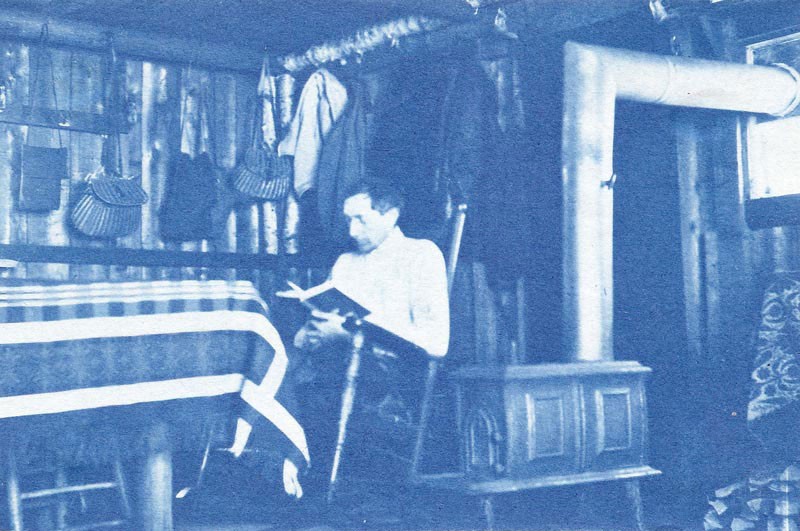
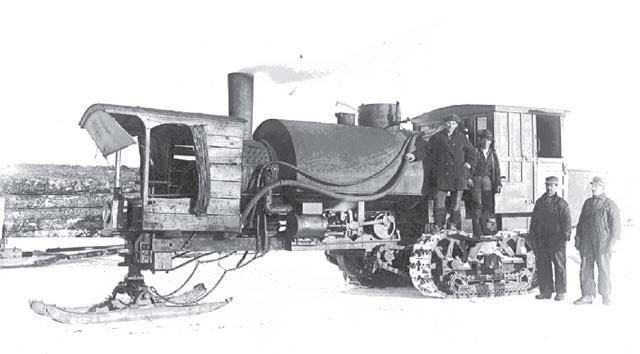
After drinking in our fill of this – no, not our fill by any means, for it was too bitter cold up there to stay long in one place – we headed further up to where we found red-capped and jacketed men felling trees on the mountain side. McEachern had told us of a little lake over the top of the ridge where he was going to cut later, so we struck off through a virgin forest of small balsams and spruce towards this. It was beautiful and wild here. The snow is so deep and soft – and plastered so closely to the evergreens. I followed up what seemed to be the bed of a brook and came to a cairn under a fallen tree and found the recent track of a huge wild cat. He must have been a buster. The track was clean cut and large as a dog’s and led off from the cairn across the lake which we soon came upon.
A perfectly round shallow pond sat like a basin in the midst of virgin spruce growth and was surrounded on three sides by a beautiful spruce ridge. Rocks stuck up everywhere through the snow, so there are probably no fish in this little mountain pond. We did not stay long here but pushed back to the cuttings again. For poking around to see the different cutters fell their trees, I came suddenly to the sheer edge of the ridge where the men, like side-hill badgers, were felling trees right on the almost perpendicular side of the mountain. The woods were dark, the sun coming through in long streaks made beautiful effects on the snow, and as a tree went crashing to the ground, rending and tearing its lesser brothers in its path, it sent up great showers of snow all around.
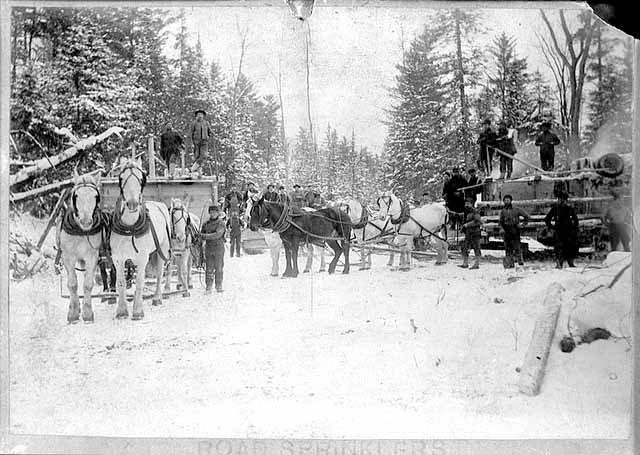
But I heard choppers further along the ridge and the jingle of a bell which meant a team of horses towing out logs. I climbed along the fallen tops and an awful tangle of stumps and cut-off tops when all of a sudden there burst in new these wonderful white glistening mountains of the Enchanted and Moosehead and Kineo and our lake immediately below us. Right under us was a team of two horses and two husky lumberjacks teaming out trees on this sheer precipice, hauling them clear of all debris, unhitching the horses, and, with one jerk of the cant-dog9, sending the great logs shooting down the mountain side to the road hundreds of feet below. It seemed absolutely incredible that horses could ever reach such a height or such a steep, sheer side hill, to say nothing of them working in such a place. They worked carefully and unconcernedly, as if on level ground. It was a revelation to me to see such stupendous work going on on this sheer mountainside.
The lumbermen were jolly fellows and told us about their work. One said this was the coldest spell they had had in many years. It was bitter cold here on the mountainside, as the blasts from the north wind bit with full force. We took several pictures and stayed to watch this truly amazing piece of work. It impressed me tremendously. We were up some 800 or 900 feet. The view was even finer than the first we got further over the ridge. It seemed as if you could almost touch old Elephant.
We started down the mountain and had many a spill on the way because of the steep and slippery road. We reached the camp again at 1:30. We went right out to the big hauler road where we had seen the log hauler with steam up ditched in the morning. A gang of men were now working hard on her, trying to raise her up out of the hole she had gotten into. Right back of the steaming, peculiar cross between a road roller and a sled was the wide swath in the front and Old Elephant’s bare spot looking right down on us. Next we struck off a tote road and watched a team haul out logs from the swamp to a big yard where the scaler, Rogers, was measuring up his yard of logs.
From there we struck right through the unbroken woods to the lake in a bee line and landed in the little cove just to the south of Wing’s Point. The lake is crusted hard and fine for shoeing. The view of the birches on Wing’s Point was fine and the silver ridge looming up back of them a revelation. The mountains from the narrows in the afternoon sun were also superb. I went on to the head of the stream to take a panorama there while Tracy went home to start the fire. We then went down to Long Island and hauled out two more birch logs. While Tracy was cutting these, I prepared a “none-such” supper of venison, spinach, soup aux croutons, peach sauce, and jelly. Finished Barbara Worth tonight. Temperature at return stands at -14º and the great dipper looks cold.
Epilogue: Ten years after the trip described above, Dr. Risley left his Boston surgical practice to set up as a country doctor in Waterville, Maine, after his young son’s bout with peritoneal tuberculosis prompted him to seek a healthier climate in which to raise his children. He served the Moosehead region as surgeon when particularly dire cases prompted the local practitioner to seek his help. Risley made many expeditions into winter logging camps to tend to crushed limbs and other injuries, sometimes crossing the lakes on snowshoes by moonlight and operating on kitchen tables lit by kerosene lamps. He passed his deep love of the North Woods to his children and grandchildren, some of whom work in forest conservation today.


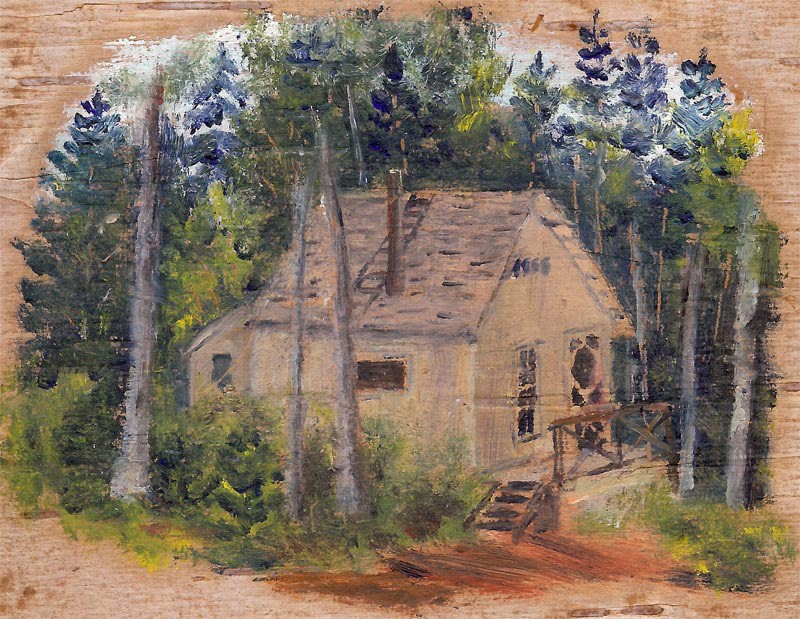
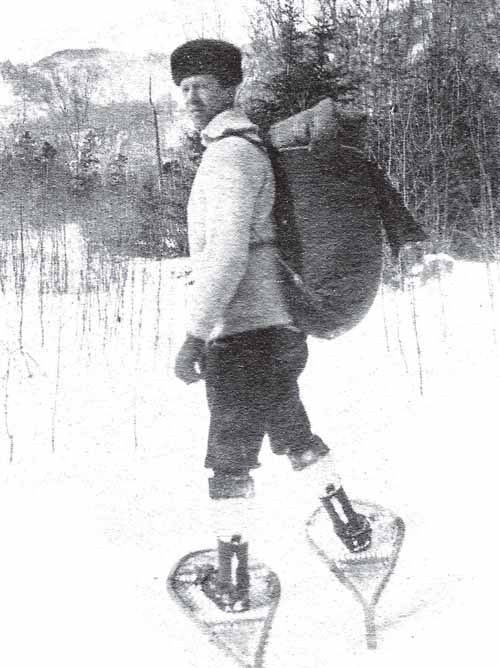
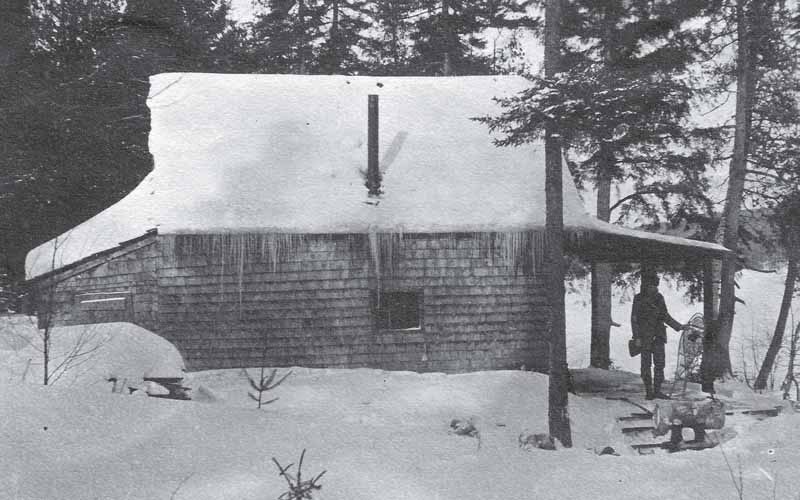
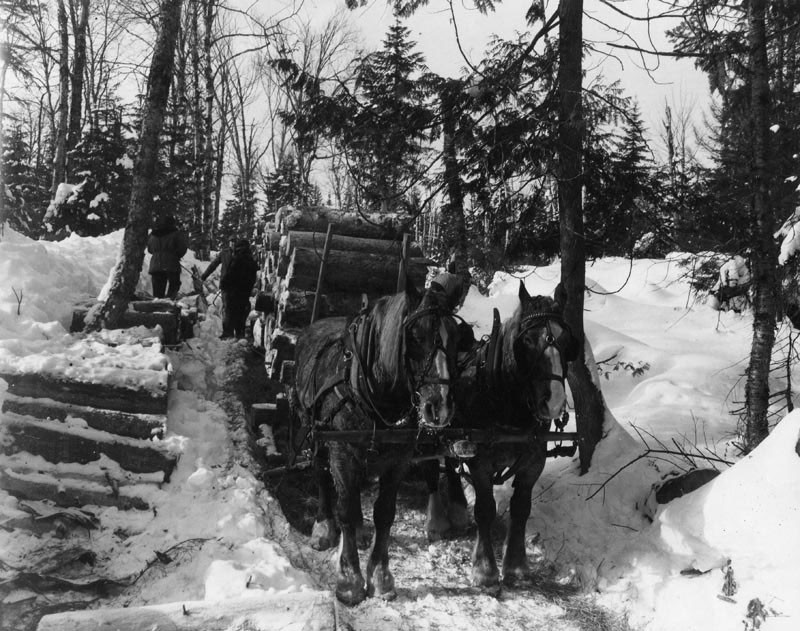

Discussion *